Periodontal Care focuses on caring for the gums and surrounding tissue inside of the mouth. Lifestyle Dentistry is pleased to offer a wide variety of periodontal services to meet all your needs. We treat many issues, and we pride ourselves on patient satisfaction. Treatment recommendations are conservative, and we limit surgery to when it is necessary. In particularly complex cases, we may refer patients to a specialist.
Your Choice for Mississauga Periodontal Care!
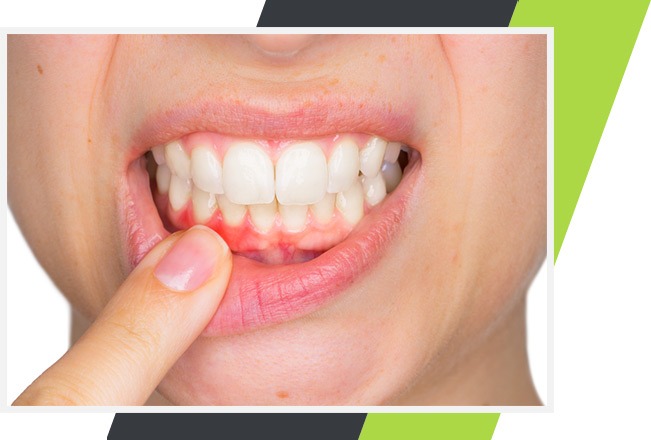

Periodontal Services
Early stages of periodontal disease are best treated with nonsurgical therapy. Even in severe cases of periodontal disease, there are nonsurgical therapies that we recommend before surgery. Our philosophy is always to limit surgery to protect the overall tissue quality of a patient’s mouth. Some of the periodontal services we offer include:
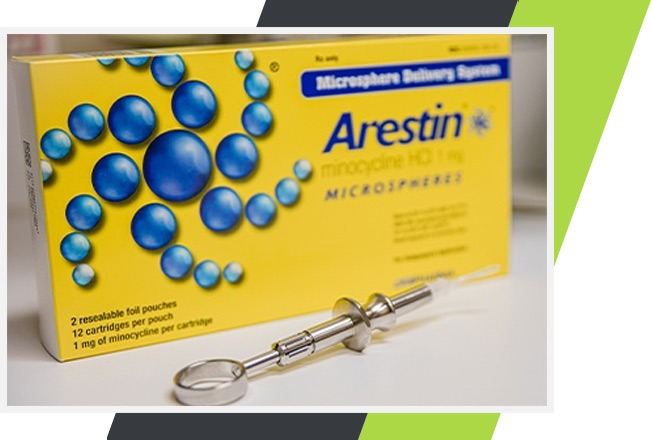
Arestin

Arestin is a topical antibiotic that treats the bacteria that cause gum disease. It is made up of a powder with thousands of tiny bead-like microspheres that are smaller than grains of sand and invisible to the naked eye. They release antibiotics over long periods into the pockets where bacteria breed, helping your gums heal. If you have been diagnosed with periodontitis (advanced gum disease), Arestin may be recommended for your treatment. Gum disease is caused by microbial plaque that colonizes on the surface of your tooth and below the gumline. This bacterium breaks down the tissue and even the bone supporting your teeth. If left untreated, gums can become inflamed and the tissues and bone that hold your teeth up can begin to deteriorate. Infected gums can pull away from the teeth, creating pockets that become a breeding ground for more bacteria. Lifestyle Dentistry uses Arestin to help fight gum disease after a periodontal procedure. This is also known as scaling and root planing, a non-surgical procedure where your dental specialist deep cleans above and below your gum line to remove plaque that has built up on your teeth.
Gingivectomy
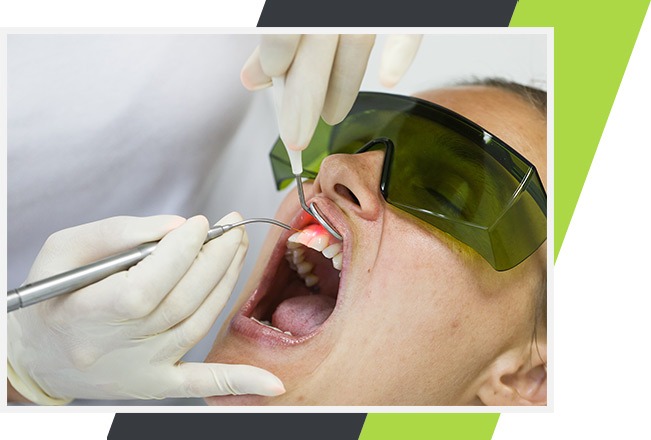
A gingivectomy is a procedure to remove a portion of the gum tissue from around a tooth or teeth. It may be performed to heal the effects of periodontal disease or to correct overgrown gingiva. It is one of a few procedures that can help reverse periodontal issues. A similar procedure is gingivoplasty, which only partially removes a section of gum tissue rather than the entire section. A gingivectomy is typically completed with a surgical scalpel, though sometimes a low-frequency laser is used. The diseased gum tissue is trimmed and removed, the remaining tissue is reattached around the teeth with stitches, and then the area is carefully cleaned. The patient is kept comfortable during the procedure with the use of a local anesthetic. The recovery process typically takes less than a month.

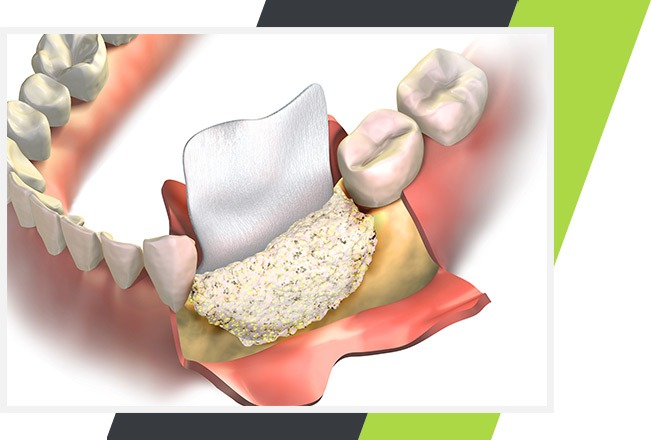
Guided Tissue Regeneration

Advanced periodontal disease not only affects the gums but also causes bone loss in the jaws, which increases the risk of tooth loss. After the tooth is gone, even more bone loss will occur, providing less support for the surrounding teeth and further endangering them. It is a scary cycle. Luckily, modern dentistry offers techniques to regrow lost bone to provide support for teeth and dental implants. One of these techniques is guided tissue regeneration. Bone and gum tissue, when healthy, fit snugly around the roots of our teeth. Guided tissue regeneration helps to restore lost bone and give support back to those roots, increasing the chances of being able to keep natural teeth. This procedure can involve bone grafting, tissue banks, or synthetic materials, to stimulate new bone growth.
Gum Contouring & Reshaping
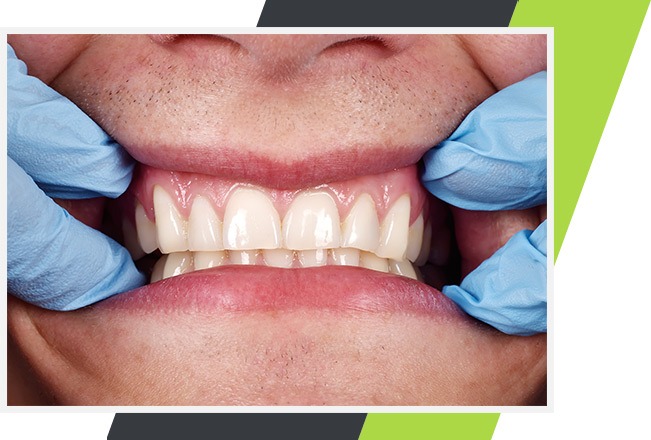
If you lack confidence in your smile because of excessive or uneven gum tissue, gum contouring might be right for you. A minimally invasive oral surgery procedure that gently trims and reshapes excess gum tissue, focusing only on areas where gums extend too far over the teeth, gum contouring can provide healthier, more attractive gums. Aside from a more attractive smile, you can have confidence in, gum contouring has long-term benefits for your oral health. Excess gum tissue can increase the risk of gum disease because it leaves deeper pockets where bacteria can hide and multiply. When that extra tissue is gone, it becomes much easier to clean that bacteria away with regular brushing and flossing!

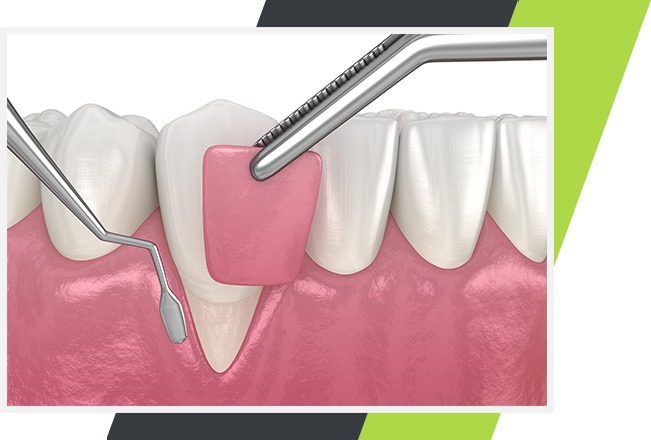
Gum Grafting

Gum grafting is a type of oral surgery that reinforces areas of the gum tissue that have receded and have left dental roots exposed. Gum recession affects 4 to 12% of adults, and because it is a gradual process, it may go unnoticed until it becomes severe. The exposed roots are not just unsightly, they are also sensitive and vulnerable to decay. Gum grafting gives back the protection those teeth need. There are three different ways a gum graft procedure can work:
- Connective-tissue grafts: Used most often to treat gum recession. A piece of tissue is taken from beneath the skin on the roof of the mouth and stitched into the gum tissue over the exposed dental roots.
- Free gingival grafts: Similar to connective-tissue grafts, these take the tissue directly from the roof of the mouth without making a flap in the skin first. The preferred option for patients who already have thin gum tissue and need the additional tissue to enlarge it.
- Pedicle grafts: If a patient has plenty of gum tissue near the exposed root, they may not need any tissue from the roof of the mouth. Instead, a small flap can be made in the nearby gum tissue so that it can be pulled down or over to cover the exposed root before being sewn into its new position.
Periodontal Cleaning
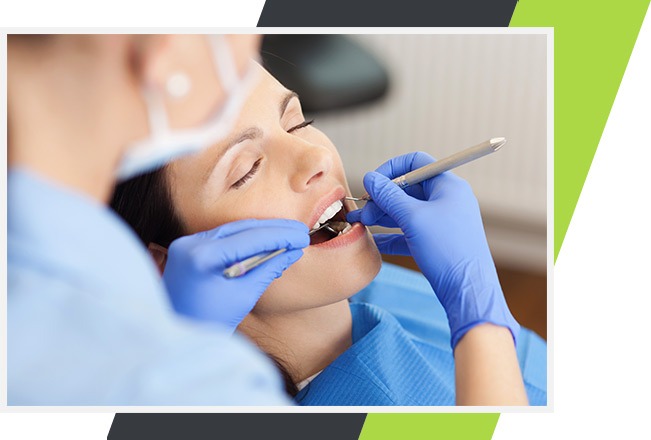
If you have been diagnosed with gum disease, Lifestyle Dentistry can help. With thoughtful treatment and careful maintenance, we can correct the problem and protect your healthy smile. Depending on your condition and needs, we may recommend a treatment known by several different names, such as root planing and scaling, periodontal cleaning, or “deep cleaning.” When a bacterial infection has become too “set-in” to be remedied by routine cleaning, or plaque has solidified into calculus deposits that are sitting under the surface of your gums and continue to irritate the gums and spread infection, periodontal cleaning is necessary. This would involve removing the calculus from below the gum line using special tools and smoothing the root surfaces to be sure plaque cannot continue to get traction. Once the plaque and calculus are removed, your gums can heal. Mississauga Gum disease treatment may require some follow-up maintenance and monitoring. More frequent cleanings will help protect your recovering gums and allow us to monitor your progress.

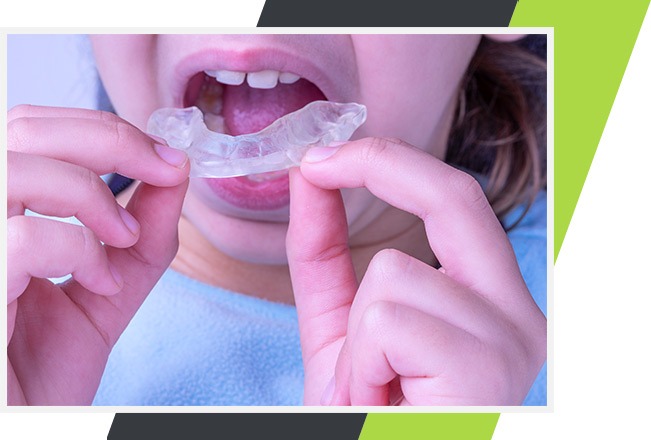
Periodontal Splint

One of the effects of periodontal disease is the gradual loosening of the teeth, as surrounding gum and bone tissue is compromised. Teeth can also become loosened by traumatic injury. In both cases, chewing can be painful and difficult. One solution for loose teeth is periodontal splinting. This involves splinting or joining together the teeth, so the bite pressure is distributed evenly among them. A splint can either be temporary or fixed. Teeth can be splinted together temporarily with extra-coronal splints, which are bonded to the enamel, or intra-coronal splints, which involve cutting a small channel into the teeth and inserting and cementing a custom metal splint in place. In permanent or fixed splinting, the crowns of the affected teeth are fused.
Scaling and Root Planing
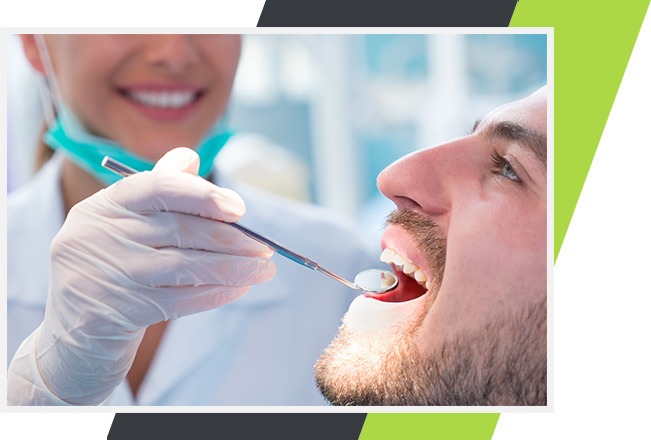
Periodontitis (chronic gum disease) is caused by a sticky film of bacteria called plaque, which is always forming on teeth. If teeth are not cleaned well, the bacteria in plaque can harden into tartar and cause the gum tissue to become inflamed. If left untreated, gums will begin to pull away from the teeth, leaving deepening pockets where bacteria can breed. At that point, it is extremely difficult (if not impossible) to remove plaque and tartar with regular brushing and flossing, and there is also the risk of bone and tooth loss. Scaling and root planing is recommended for patients diagnosed with periodontitis. Scaling and root planing is a two-part procedure to treat periodontitis. The scaling portion involves the removal of plaque and tartar above and below the gumline, cleaning down to the bottom of the pocket. The second phase involves root planing, which smoothes out the roots of teeth to help gums reattach to them while keeping bacteria, plaque, and tartar from re-adhering underneath the gum line. The process may take more than one appointment to ensure teeth are clean and healthy. Follow-up treatments are recommended to check on healing. In most cases, patients who have red or swollen gums find that the tenderness and bleeding from periodontitis are reduced or eliminated. If your gums respond well and remain stable, you will not need any further treatment.


